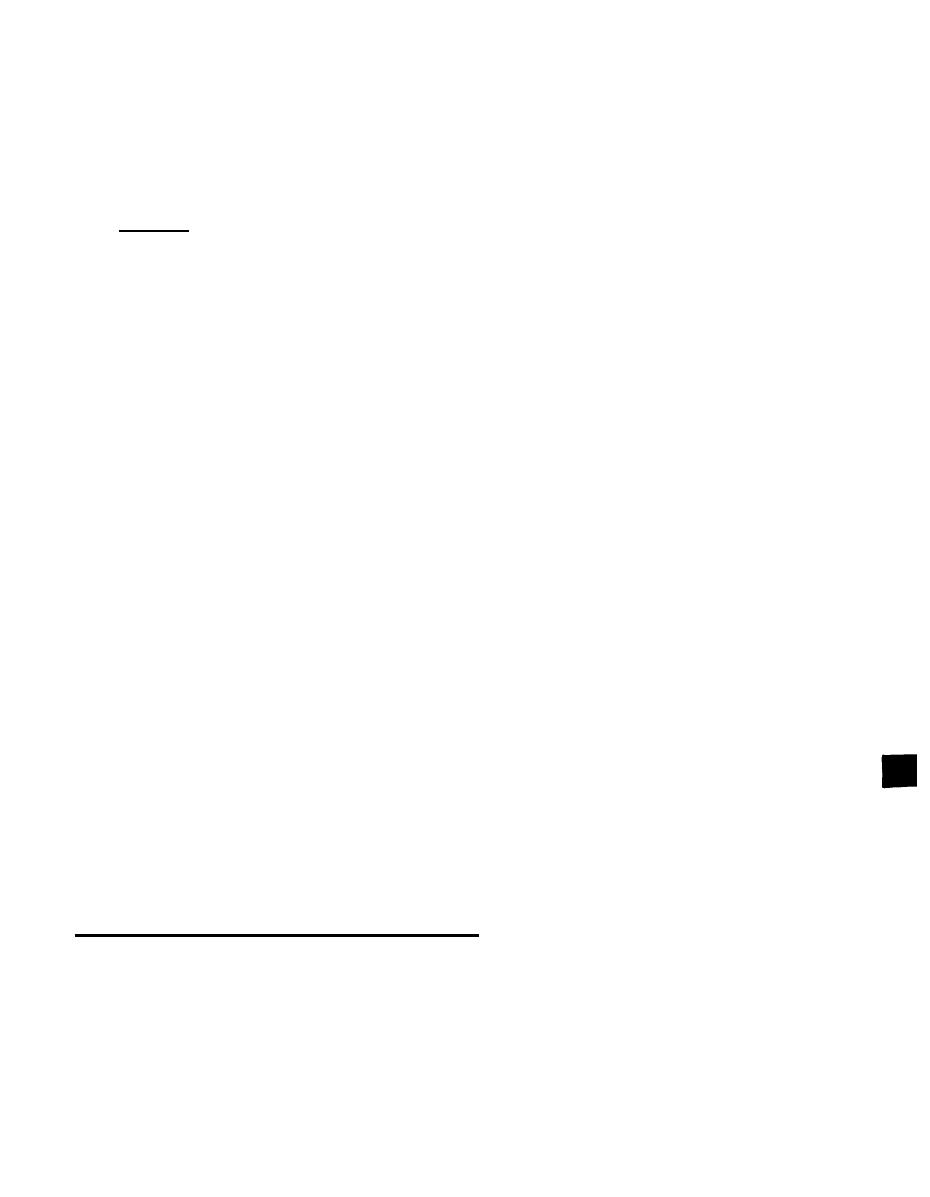
TM 9-4120-370-14
TO 35E9-229-1
MAINTENANCE ALLOCATION CHART (MAC)
Section 1. INTRODUCTION
B-1
GENERAL.
a. This section provides a general explanation of all maintenance and repair functions authorized at various
maintenance categories.
b. The Maintenance Allocation Chart (MAC) in Section II designates overall authority and responsibility for
the performance of maintenance functions on the identified end item or component. The application of the mainte-
nance functions to the end item or component will be consistent with the capacities c.nd capabilities of the designated
maintenance categories,
c. Section Ill lists the tools and test equipment (both special tools and common tool sets) required for each
maintenance function as referenced from Section Il.
d. Section IV contains supplemental instructions and explanatory notes for a particular maintenance
function.
FOLLOWS:
a. Inspect. To determine the serviceability of an item by comparing its physical, mechanical and/or electrical
characteristics with established standards through examination (e.g. by sight, sound, or feel).
b. Test. To verify serviceability by measuring the mechanical pneumatic, hydraulic, or electrical characteris-
tics of an item and comparing those characteristics with prescribed standards.
c. Service. Operations required periodically to keep an item in proper operating condition, i.e., to clean (in-
cludes decontaminate when required), to preserve, to drain, to paint, or to replenish fuel, lubricants, chemical fluids, or
gases.
d. Adjust. To maintain or regulate, w!thin prescribed limits, by bringing into proper or exact position, or by
setting the operating characteristics to specified parameters.
e. Align. To adjust specified variable elements of an item to bring about optimum or desired performance.
f. Calibrate. To determine and cause corrections to be made or to be adjusted on instruments or test, meas-
uring, and diagnostic equipment used in precision measurement, Consists of comparisons of two instruments, one of
which is a certified standard of known accuracy. to detect and adjust any discrepancy in the accuracy of the instru-
ment being compared.
g. Remove/install. To remove and install the same item when required to perform service or other mainte-
nance functions, Install may be the act of emplacing. seating, or fixing into position a spare, repair part, or module
(component or assembly) in a manner to allow the proper functioning of an equipment or system.
h. Replace, To remove an unserviceable item and install a serviceable counterpart in its place. "Replace" is
authorized by the MAC and is shown as the third position code of the SMR code.
-
i. Repair, The application of maintenance services 1 m
, Cluding fault [ocation/troubleshooti ngp, removal/insta'
Iation and disassembly/assembly3 procedures, and maintenance actions4 to identify troubles and restore serviceability
to an Item by correcting specific damage, fault, malfunction, or failure in a part, subassembly, module (component or
assembly), end item, or system.
1
Services - Inspect, test, service, adjust, align, calibrate, and/or replace.
2
Fault Iocationltroubleshooting The process of investigating and detecting the cause of equipment
malfunctlonlng; the act of isolating a fault within a system or unit under test (UUT).
3
Disassembly/assembly Encompasses the stepbystep taking apart (or breakdown) of a sparelfunc-
tional group coded item to the level of its least componency identified as maintenance significant (i.e..
assigned an SMR code) for the category of maintenance under consideration.
4
Actions Welding, grinding, riveting, straightening, facing, remachining, and/or resurfacing.

